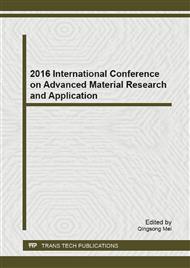p.225
p.230
p.234
p.241
p.245
p.250
p.254
p.260
p.265
Stress-Strain Behavior of an Octahedral and Octet-Truss Lattice Structure Fabricated Using the CLIP Technology
Abstract:
In the rapidly growing field of additive manufacturing (AM), the focus in recent years has shifted from prototyping to manufacturing fully functional, ultralight, ultrastiff end-use parts. This research investigates the stress-strain behavior of an octahedral-and octet-truss lattice structured polyacrylate fabricated using Continuous Liquid Interface Production (CLIP) technology based on 3D printing and additive manufacturing processes. Continuous Liquid Interface Production (CLIP) is a breakthrough technology that grows parts instead of printing them layer by layer. Lattice structures such as the octahedral-and octet-truss lattice have recently attracted a lot of attention since they are often structurally more efficient than foams of a similar density made from the same material, and the ease with which these structures can now be produced using 3D printing and additive manufacturing. This research investigates the stress-strain behavior under compression of an octahedral-and octet-truss lattice structured polyacrylate fabricated using CLIP technology
Info:
Periodical:
Pages:
245-249
Citation:
Online since:
January 2017
Authors:
Price:
Сopyright:
© 2017 Trans Tech Publications Ltd. All Rights Reserved
Share:
Citation:


